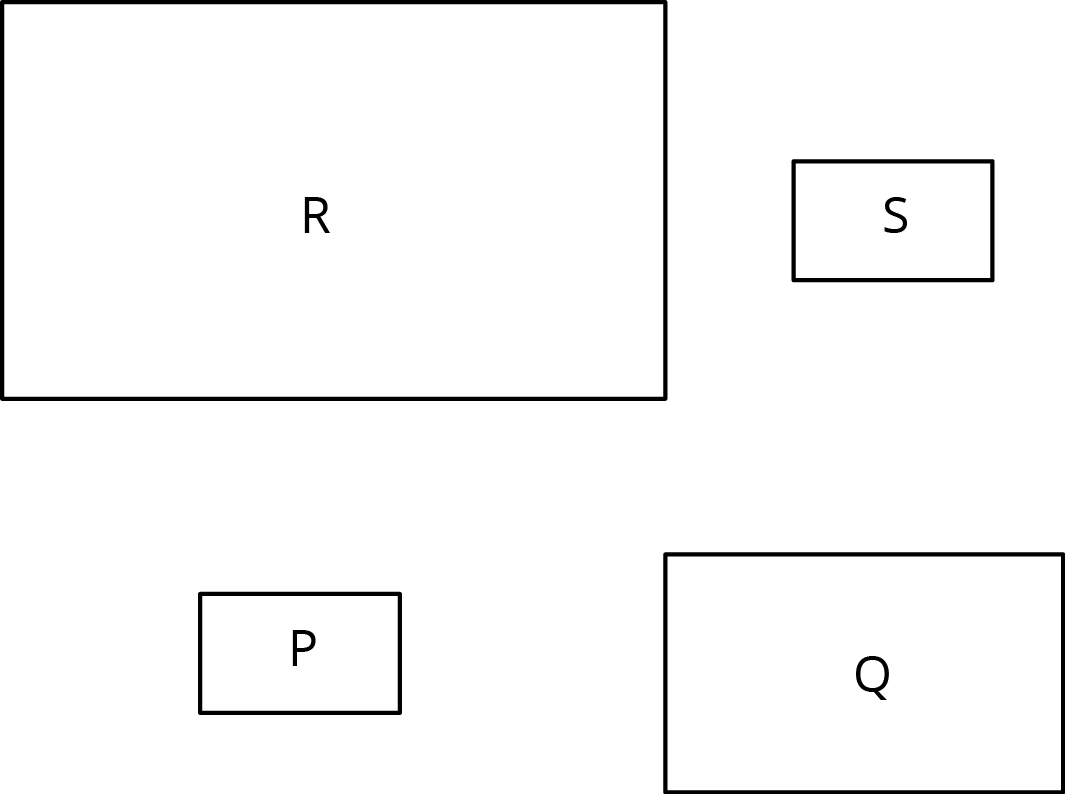Lesson 5
The Size of the Scale Factor
Problem 1
Rectangles P, Q, R, and S are scaled copies of one another. For each pair, decide if the scale factor from one to the other is greater than 1, equal to 1, or less than 1.

- from P to Q
- from P to R
- from Q to S
- from Q to R
- from S to P
- from R to P
- from P to S
Solution
For access, consult one of our IM Certified Partners.
Problem 2
Triangle S and Triangle L are scaled copies of one another.
-
What is the scale factor from S to L?
-
What is the scale factor from L to S?
-
Triangle M is also a scaled copy of S. The scale factor from S to M is \(\frac{3}{2}\). What is the scale factor from M to S?

Solution
For access, consult one of our IM Certified Partners.
Problem 3
Are two squares with the same side lengths scaled copies of one another? Explain your reasoning.
Solution
For access, consult one of our IM Certified Partners.
Problem 4
Quadrilateral A has side lengths 2, 3, 5, and 6. Quadrilateral B has side lengths 4, 5, 8, and 10. Could one of the quadrilaterals be a scaled copy of the other? Explain.
Solution
For access, consult one of our IM Certified Partners.
(From Unit 1, Lesson 2.)Problem 5
Select all the ratios that are equivalent to the ratio \(12:3\).
\(6:1\)
\(1:4\)
\(4:1\)
\(24:6\)
\(15:6\)
\(1,\!200:300\)
\(112:13\)
Solution
For access, consult one of our IM Certified Partners.